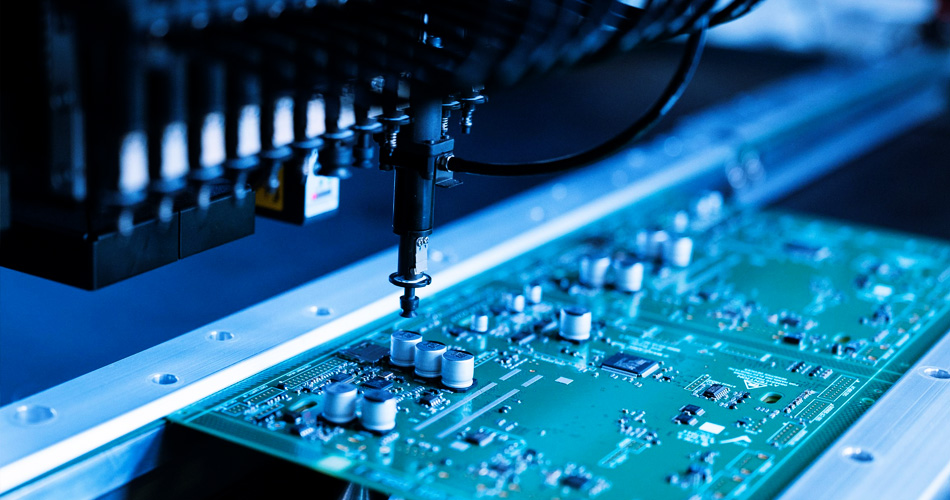- English
- Español
- Português
- русский
- Français
- 日本語
- Deutsch
- tiếng Việt
- Italiano
- Nederlands
- ภาษาไทย
- Polski
- 한국어
- Svenska
- magyar
- Malay
- বাংলা ভাষার
- Dansk
- Suomi
- हिन्दी
- Pilipino
- Türkçe
- Gaeilge
- العربية
- Indonesia
- Norsk
- تمل
- český
- ελληνικά
- український
- Javanese
- فارسی
- தமிழ்
- తెలుగు
- नेपाली
- Burmese
- български
- ລາວ
- Latine
- Қазақша
- Euskal
- Azərbaycan
- Slovenský jazyk
- Македонски
- Lietuvos
- Eesti Keel
- Română
- Slovenski
- मराठी
- Srpski језик
Non-destructive testing and quality assurance in PCBA manufacturing
2024-04-14
In PCBA (Printed Circuit Board Assembly) manufacturing, non-destructive testing and quality assurance are key engineering practices to ensure the quality, reliability and performance of circuit boards. Here are the details on both:

1. Non-destructive testing:
Non-destructive testing is a non-destructive inspection method designed to identify defects and problems on circuit boards without compromising the integrity of the board. The following are some common applications of non-destructive testing technologies in PCBA manufacturing:
X-ray inspection: X-ray inspection can be used to detect the internal structure of solder joints, especially for packages such as BGA (Ball Grid Array) and QFN (Quad Flat No-Lead).
Ultrasonic testing: Ultrasonic testing can be used to detect through-hole welding and welding quality, especially solder joints in multi-layer PCBs.
Infrared Thermal Imaging: Infrared thermal imaging technology can be used to detect thermal issues and thermal unevenness, helping to identify circuit faults on circuit boards.
Visual inspection: Use high-resolution cameras and microscopes to inspect the appearance of solder joints to identify problems such as solder defects, weak solders, missing components, etc.
Electrical testing: Electrical testing includes connectivity testing, resistance testing, capacitance testing, etc., which are used to detect electrical problems on the circuit board.
Nondestructive testing technology helps identify problems early in the manufacturing process, reduce the rate of defective products, and ensure the quality of circuit boards.
2. Quality assurance:
Quality Assurance (QA) is a set of systematic practices designed to ensure that products meet consistent quality standards during the production process. The following are some of the quality assurance measures implemented in PCBA manufacturing:
Quality Management System: Establish and maintain a quality management system, such as ISO 9001, to ensure process control, documentation and records.
Process control: Develop clear process flow and standard operating procedures (SOP) to ensure that each process step is executed correctly.
Employee training: Train employees to understand quality standards, processes and testing methods, and encourage them to participate in quality improvement.
Data logging and traceability: Record manufacturing data for each circuit board to enable traceability and investigation of problem root causes if needed.
Continuous improvement: Adopt continuous improvement methods such as 6σ (Six Sigma) and PDCA (Plan-Do-Check-Act) to continuously improve the quality and efficiency of the manufacturing process.
Supplier management: Ensure that suppliers in the supply chain also meet quality standards and achieve quality control through supplier audits and contract management.
Testing and Inspection: Testing and inspection are performed regularly to ensure products meet specifications.
Quality assurance measures help reduce defective rates during the manufacturing process, improve product reliability and performance, and ensure the delivery of high-quality circuit boards that meet customer expectations.
Taken together, non-destructive testing and quality assurance are important steps to ensure product quality in the PCBA manufacturing process, which can reduce manufacturing costs, improve production efficiency and enhance customer confidence. These measures often need to be combined to achieve optimal quality control and quality assurance results.
-
Delivery Service






-
Payment Options









